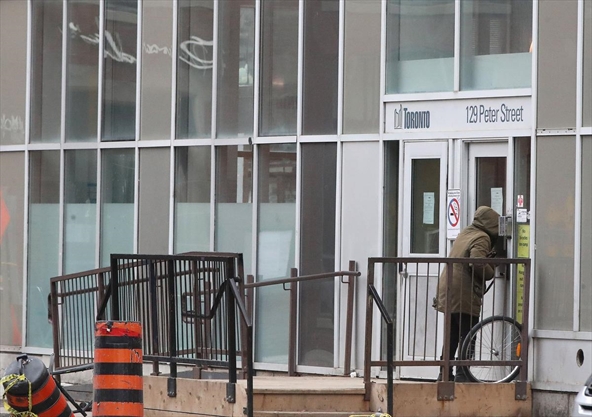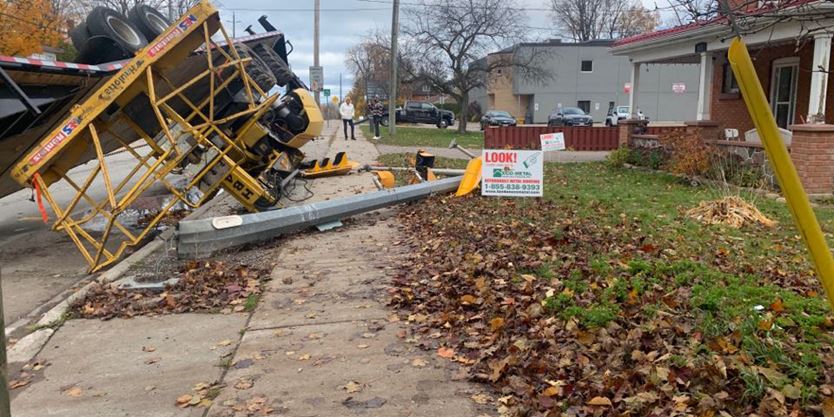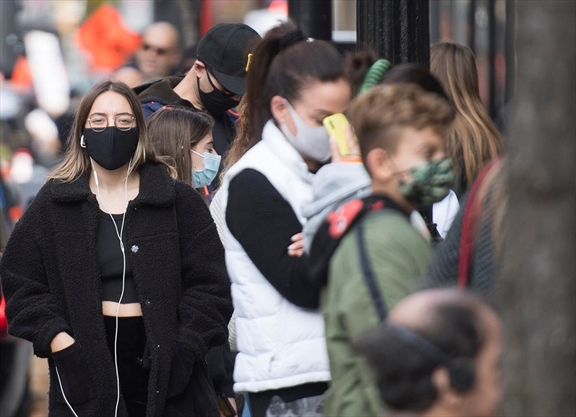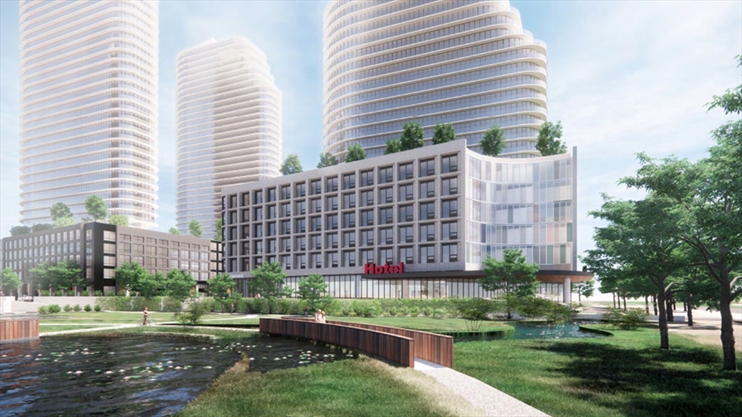Coming of age in the epoch of the coronavirus is a bummer.
Just when young adults are starting to spread their wings, exploring independence, punching through the parental bubble wrap, they’ve been stuffed back into infantilizing stasis.
The sheer fun of salad days has been smothered by a pandemic. When they do venture out in youth packs, cue the lectures and shaming. Because that’s always worked so well, yes?

Hard to be a rebel without a cause — the essence of angsty young adulthood — when you’re fingered for causing community contamination, bringing COVID-19 into the household, knocking off your grandparents. As London, Ont., Mayor Ed Holder berated last month, amidst positive case counts that climbed to levels not seen since the spring, scores linked to off-campus partying by Western University students: “You are going to kill someone.”
And turn down that godawful music while you’re at it.
No graduation ceremonies. No proms. No campus activities. No concerts. No moshing. No hangin’ out — except maybe at the mall, idly. Which fortunately is at least one popular time-waster not yanked back to forbidden in Ontario hot spot municipalities. Kingston has approved new fines for anyone hosting off-campus house parties, Queen’s University even threatening to expel students who do so.
Browbeating does not change behaviour.
“There are so many milestones that we have lost, like graduation,” says Em Hayes, a youth engagement facilitator at the Centre for Addiction and Mental Health who is pursuing a masters in teaching. “Going back to school has been very challenging. I’m exhausted talking to a computer screen all day. I miss my community although most of us are also finding new ways to create communities.
“You don’t realize how much it meant to be in the physical presence of others until it was taken away.’’
Little wonder that mental health — anxiety segueing to depression — is cause for acute concern among pulse-takers of the youthful demographic in Canada.
“The pandemic and its restrictions are uniquely impacting young people because it impacts their developmental milestones and tasks right now,” says Joanna Henderson, associate professor of psychiatry at the University of Toronto, who is extensively involved with mental health initiatives for children and youth at the Centre for Addiction and Mental Health. “It doesn’t take long as adults to forget what it was like to be 16 or 18 or 20.”
Growing up is a torment at the best of times. These are the worst of times.
“They’re wired to be engaging socially, to be moving towards autonomy, to be learning, to be securing employment,” Henderson points out. “All of those things are being impacted by the pandemic and their restrictions. We have young people who are living by themselves, completely alone, and it may be the first time that they’ve moved out on their own. So, extremely difficult circumstances to cope with. And we have other young people who are in very close multi-generational homes in small dwellings who are experiencing tremendous economic stress.’’
But see a photo on social media of teenagers enjoying a bush party and BOOM — public health officials, politicians and online nags go berserk. How selfish. Of course they’re selfish. Show me a young person who isn’t self-absorbed. Traditionally, that’s why we cut them slack — because they’re not yet mature and conscientious.
Data shows more people in their 20s have tested positive for COVID-19 than any other age group. As of Oct. 16, 18.5 per cent of positive cases related to people aged 20 to 29 across Canada, 11.6 per cent among those 19 and under. The upside, doubtless due to their prevailing good medical health, is that they account for just 3.1 per cent of hospitalizations, the second lowest age bracket.
“My observation is there’s a focus on the 18-35 year old age range because we’re seeing increased rates there,” Henderson continues. “That is sometimes expressed in judgmental ways and I have concerns about that because the places that opened up during Stage 3 were places where young people are commonly employed and residences in universities, places of predominantly young people.”
Young people who, according to various studies and polls, are experiencing anxiety and depression, as high as a 20 per cent increase in that cohort.
“We haven’t given as much guidance as we need to on how to make those complex weighing of different places, how to respect the fact that we have young people out there kind of on the front line of our economy reopening,” says Henderson. “Recreation and partying is part of the story but certainly not the whole story. It’s easy to say stay six feet apart and wear a mask. But in actuality, we have pretty conflicting messages circulating right now about what’s important in our communities, in our economy, and how we’re expecting all people, including young people, to move forward.”
What Hayes describes as “the vagueness of the rules that are put out there.”
Henderson: “These are moments of interactions and transactions that are happening. It’s really incumbent on decision-makers and adults to communicate clearly and realistically if we actually want our messaging to resonate with young people.”
Considering that half the world’s population is younger than 30, this demographic has hardly any say-so in how COVID-19 is being targeted and the extent to which for-the-good-of-everybody restrictions are screwing up their lives. There is, for example, no youth voice at the “experts” table that Premier Doug Ford is all the time citing. There isn’t even a young people’s table, as is common at those Thanksgiving gatherings we harangued into not having last weekend.
“Young people need to be at the table in these conversations because they’re experts in their own lives,” says Henderson. “Meaningfully at the table, not in a tokenistic way, where they can share their expertise.”
The tenor of the demographic was reflected in the results of a survey led by Henderson in her capacity as executive director of Youth Wellness Hubs Ontario, a government-funded initiative to transform youth mental health services in the province. The one-stop-shop model has been implemented in 10 communities across Ontario thus far, though virtually because of the pandemic. The cross-sectional survey was conducted with 622 youth participants, which allowed for open-ended answers, included both young people who’ve already connected with mental health services and those who hadn’t.
The result revealed a “statistically significant” deterioration of mental health across the clinical and community samples — 68 per cent of youth in the clinical sample and 39.9 per cent in the community sample met screening criteria for an “internalizing disorder.” Perhaps surprisingly, substance use had actually declined in both cohorts since the pandemic struck (as of May data), although 23.2 per cent of youth (clinical) and 3.0 (community) could be described as having a substance use disorder.
As the survey concluded: “Among youth with histories of mental health concerns, the pandemic context poses a significant risk for exacerbation of need. In addition, youth may experience the onset of new difficulties.”
These are the years, from teens to mid-20s, when mental health issues often manifest themselves.
What’s most impressed Henderson, however, are the coping mechanisms that young adults are seizing upon to mentally and emotionally survive the pandemic, without scars.
All kinds of different strategies, from journaling, to engaging with art, to meditation, to exercise, to gardening and, of course, connecting on virtual platforms such as Instagram, including livestreamed events.
One Hub community, in a particularly economically disadvantaged area, collectively secured food donations, created an online cooking course — teaching each other — and made food baskets for distribution.
“That’s not what we would conventionally think of as mental health services. However, it was very enriching for young people’s mental health in the context of skill-building, the sense of being engaged in a productive activity, supporting their families and connecting with the community.”
There was, in fact, a subset of the young adult community surveyed that reported improved mental health during the lockdown. “People talked about the stress of being so busy, having that alleviated. We heard about the relief from school-specific stressors, varying forms of, ‘I didn’t realize how stressful my life was until I’ve been forced to take a break.’”
Many also reconnected more deeply with families. Prior to the pandemic, how many teens really wanted to hang out with mom and dad?
Occasional folly notwithstanding — young people throughout history view themselves as indestructible, no matter the safety warnings drummed into their skulls — they get it, they get COVID-19, they get masking and physical distancing. But the coronavirus has robbed them of so much in their waning days of innocence.
Says Em Hayes: “Youth understand the gravity of the situation.”
Rosie DiManno is a Toronto-based columnist covering sports and current affairs for the Star. Follow her on Twitter:









